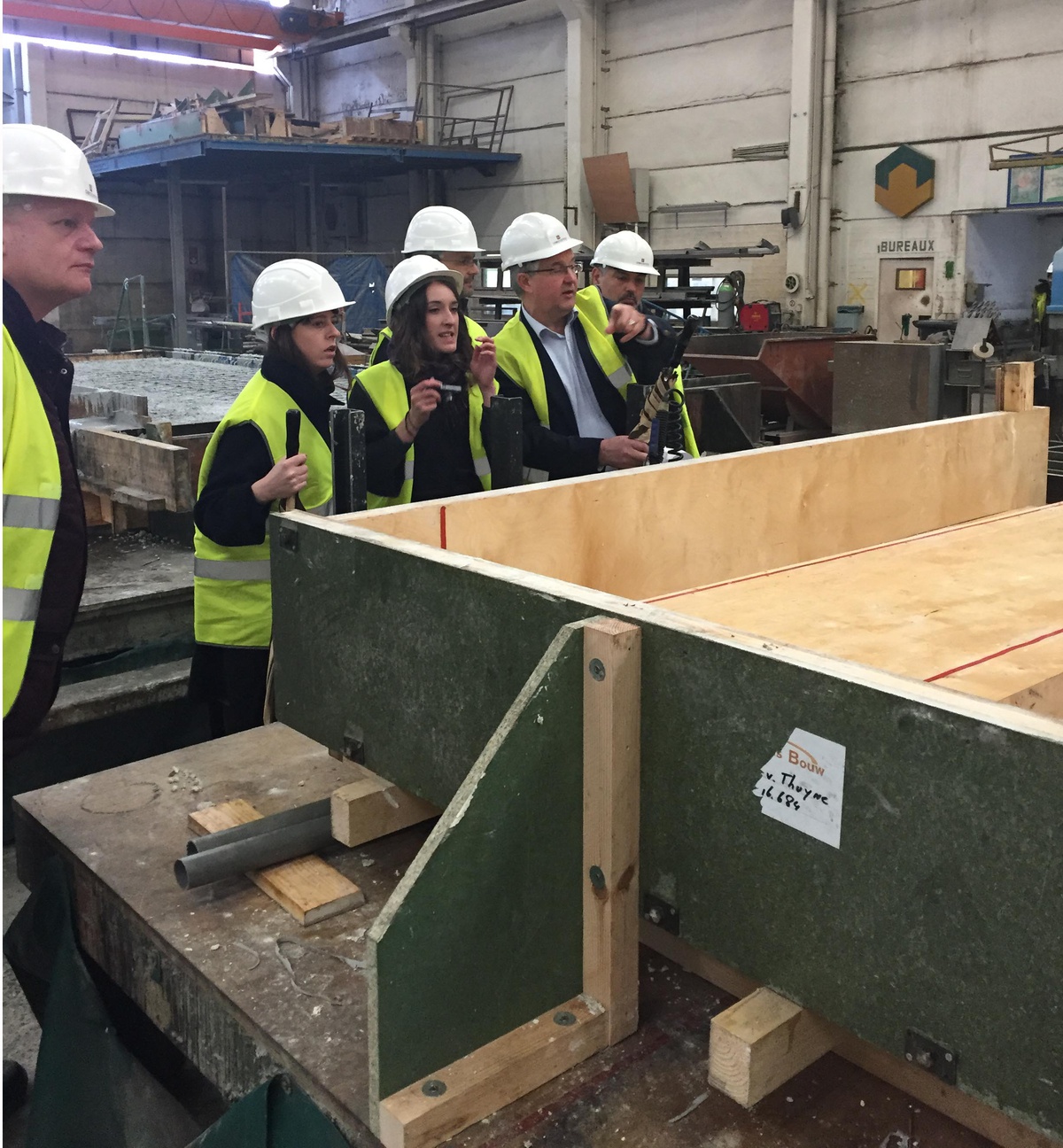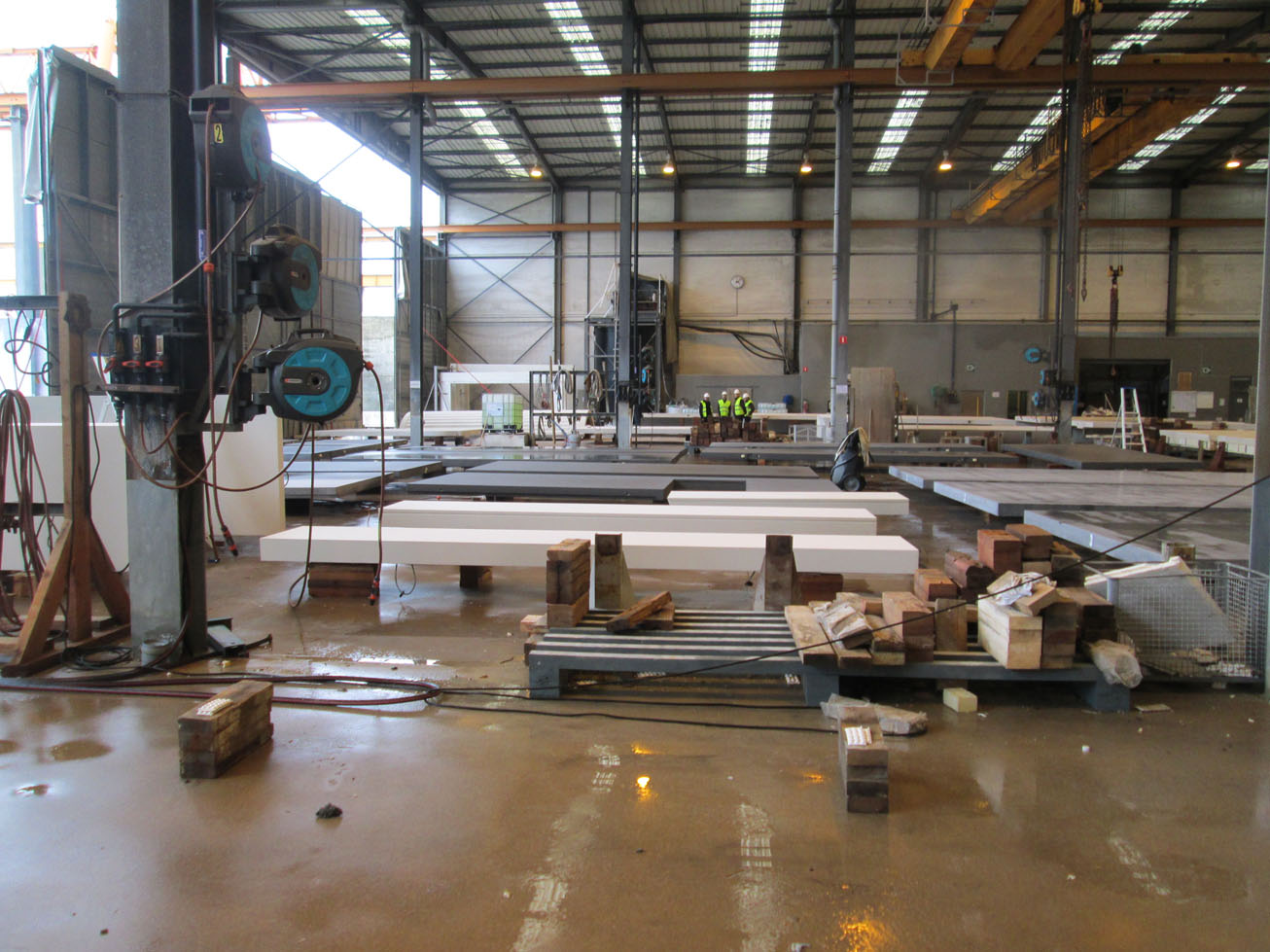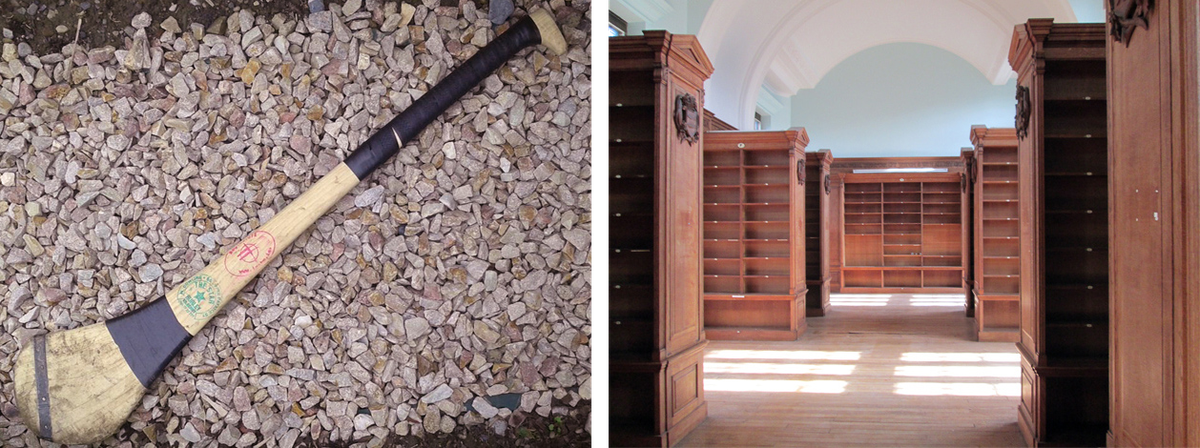BALLIOL FACADE TRIP
APRIL 2017

We are working on new student residential buildings for Balliol College, Oxford. As part of the detailed design development we have been working with a façade sub-contractor based in Belgium, and recently made a visit to their manufacturing factories. The itinerary for the day – a design workshop, a factory tour and a review of samples. Lots of coffee after an early Eurostar, and a good lunch.
There had been several similar design workshops before; where gathered around the meeting table, sketches were scattered as we questioned the architectural intent and the construction details equally. Brick samples sat in front of us, books piled up with precedents opened, past project drawings and models pulled out for reference. How to compose the language to create a calm and unified façade across the site. The engineers, the architects, the craftsmen who will build the façade.

These sorts of discussion are an aspect of everyday practice, and incredibly valuable part of the process – marrying the conversations of design aspiration with the actual making of. The bricks and mortar that see the architecture delivered from the paper to the physical form.
CRAFTLINES
AUGUST 2015

My grandfather has worn many hats; soldier, civil servant, father of seven, husband, and winner of a county final in hurling (the achievement of which he is potentially most proud). He is fluent in Irish and recalls event and dates from 50 years ago with a staggering accuracy. Yet the residing image of him from my childhood is as a craftsman – in the garage next to his house in Dublin, whittling and sanding a piece of ash to form a hurley, sizing it precisely for the user, wrapping the handle to create the perfect hold. I remember sitting, playing surreptitiously with a clamp, watching this in awe: the creation of the perfect instrument from a piece of timber; a skill honed through practice and an unfailing attention to detail. I marvelled at the assurance of it all, the promise in his hands.
It would be satisfyingly simple to attribute my choice of career to these moments – to claim there was an epiphany in watching him, a sudden realisation that I wanted to be an architect, to create. In reality, however, the path was not so linear; instead the conviction that I wanted to become an architect embedded itself in my consciousness slowly, over time. The memory of him working in his garage was one I didn’t return to often, and like any story we fail to repeatedly tell ourselves, it languished, dormant, in the recesses of my mind.
I recently went to site at Jesus College, Cambridge, where we are working on a project that is part new build, part refurbishment. An aspect of the refurbishment involves the adaptation of eight bookcases in the magnificent former library into wall panelling. The existing bookcases are a dark stained timber, designed by Maurice Webb in the 1920s and wonderfully crafted by a masterful hand. Reworking these without compromising their beauty would be a challenge for any craftsman.
On seeing the work the joiner had done, I realised there was no cause for worry – it had been executed with confident, competent hands. In that moment, the memory of my grandfather in his garage came back to me in glorious Technicolor; and I felt a familiar thrill at the embodied potential of the right material in the hands of a craftsman, with promise in his hands.


